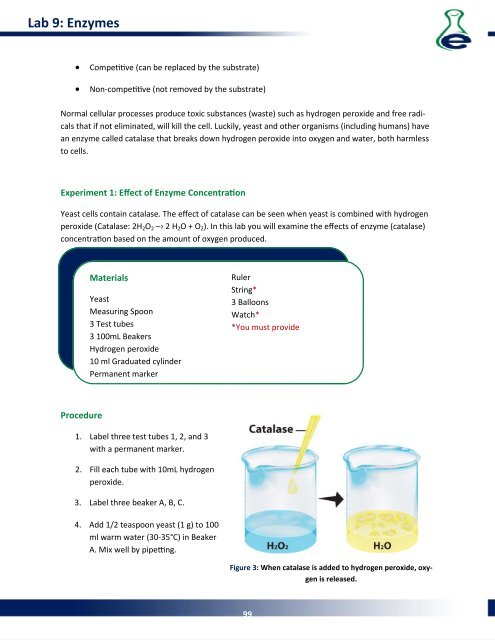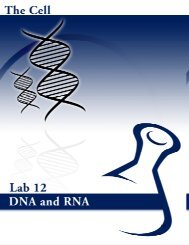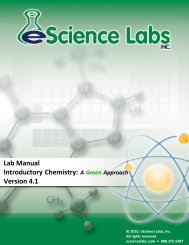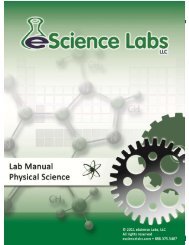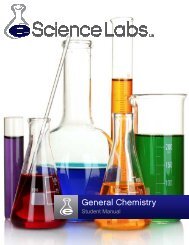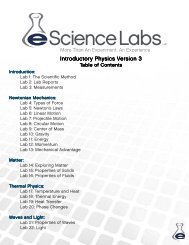Lab Manual - eScience Labs
Lab Manual - eScience Labs
Lab Manual - eScience Labs
Create successful ePaper yourself
Turn your PDF publications into a flip-book with our unique Google optimized e-Paper software.
<strong>Lab</strong> 9: Enzymes<br />
• Compeve (can be replaced by the substrate)<br />
• Non-compeve (not removed by the substrate)<br />
Normal cellular processes produce toxic substances (waste) such as hydrogen peroxide and free radicals<br />
that if not eliminated, will kill the cell. Luckily, yeast and other organisms (including humans) have<br />
an enzyme called catalase that breaks down hydrogen peroxide into oxygen and water, both harmless<br />
to cells.<br />
Experiment 1: Effect of Enzyme Concentraon<br />
Yeast cells contain catalase. The effect of catalase can be seen when yeast is combined with hydrogen<br />
peroxide (Catalase: 2H 2 O 2 ─› 2 H 2 O + O 2 ). In this lab you will examine the effects of enzyme (catalase)<br />
concentraon based on the amount of oxygen produced.<br />
Materials<br />
Yeast<br />
Measuring Spoon<br />
3 Test tubes<br />
3 100mL Beakers<br />
Hydrogen peroxide<br />
10 ml Graduated cylinder<br />
Permanent marker<br />
Ruler<br />
String*<br />
3 Balloons<br />
Watch*<br />
*You must provide<br />
Procedure<br />
1. <strong>Lab</strong>el three test tubes 1, 2, and 3<br />
with a permanent marker.<br />
2. Fill each tube with 10mL hydrogen<br />
peroxide.<br />
3. <strong>Lab</strong>el three beaker A, B, C.<br />
4. Add 1/2 teaspoon yeast (1 g) to 100<br />
ml warm water (30-35°C) in Beaker<br />
A. Mix well by pipeng.<br />
Figure 3: When catalase is added to hydrogen peroxide, oxygen<br />
is released.<br />
99


